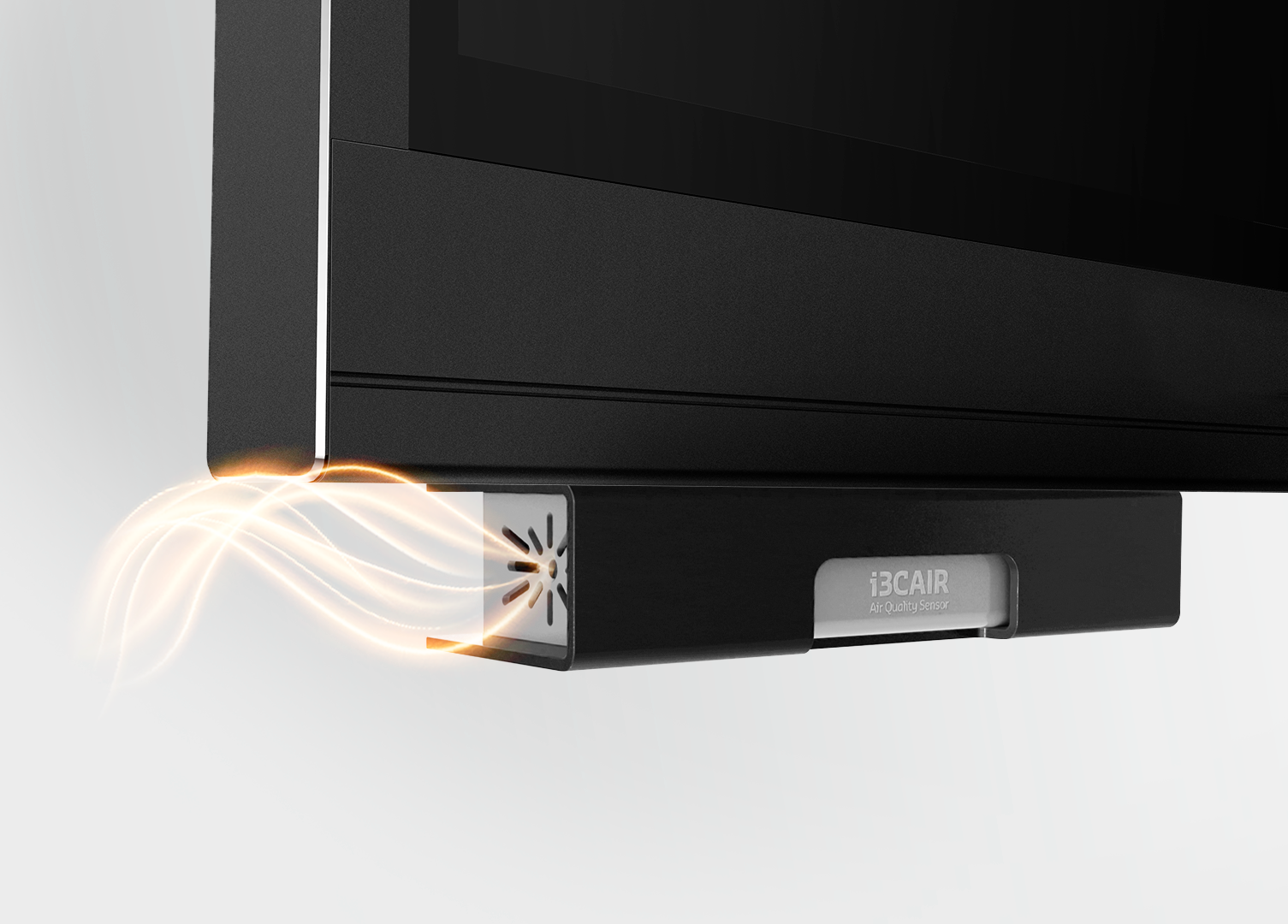How Air Quality Monitors Create Safer Environments
Posted by MooreCo Inc on Feb 8, 2021 9:00:00 AM

How Air Quality Monitors Create Safer Environments
"Breathe easy" is a phrase we used to rely on to remind each other to relax and take a moment of peace. But few of us have been "breathing easy" since COVID-19 came to the U.S. one year ago. Since that time, we've been carefully isolating, keeping our distance from others, and wearing face coverings to prevent the spread of the deadly virus. Even as Americans are getting vaccinated, it's more important than ever to slow the spread of COVID-19 until we've reached herd immunity. But there may be an additional piece to the prevention puzzle that will help schools and business get back to breathing easier sooner.
Prevention is Key
MooreCo has been providing COVID-19 solutions for schools, healthcare facilities, and the workplace since spring of 2020. With new additions to our product offerings like the Trifold Acrylic Desktop Screen, the Essentials Mobile Clear Divider, and the Clarity Acrylic Desktop Dividers, we've provided barriers for environments to reduce the spread of droplets. But it's important to note that COVID-19 is an airborne virus and extremely contagious. So in order to help prevent its proliferation, we need a multilayered approach. This is called the "Swiss Cheese Model". It means that the more efforts that are taken toward prevention, the higher the success rate will be in efforts to contain the virus. We know that wearing masks, social distancing, and frequent handwashing are effective at stopping COVID in its tracks. But since it's an highly transmissible airborne virus, more can be done to keep workers and students safe.
Introducing i3CAIR

MooreCo has been proud to partner with i3Technologies over the course of the pandemic, offering integrative technical solutions that have helped keep workers and students connected. We're thrilled to present their newest creation, an air quality monitor called the i3CAIR. It's a comprehensive solution that allows the monitoring, alerting and reporting on indoor air quality, and fully integrates with any i3TOUCH interactive display.
The Benefits of i3CAIR
Through ambient monitoring and data analytics, i3CAIR and other air quality monitors can promote wellbeing, health, and safety in classrooms and work environments through its "Wellbeing Index" that accurately measures four different parameters of optimal air quality, including: temperature, humidity, particulate matter and carbon dioxide. A blog post on i3Technologies' page describes, in detail, the importance of these parameters. They are as follows:

Temperature
Temperature plays an important role in a virus infection rate and also has an impact on performance. Viruses can thrive in temperatures below 18°C (64°F). In warmer temperatures 30°C (86°F) the infection rate or transmission of viral infections is significantly slower. The ideal indoor temperature lies between 18°C and 24°C (or between 64°F and 75°F) to keep the ambience healthy and comfortable.
Humidity
Like temperature, the humidity in a room can affect the transmission rate or comfort of a room. In humidity levels below 30% and above 55%, virus particles can remain highly infectious. Staying between 30%-55% humidity can slow the infection rate and keep a room comfortable. Too low of a humidity can cause people to become more prone to cold infection or affect respiratory illness, while too high of a humidity can also trigger some allergic reactions or contribute to existing allergies.
Particulate Matter (PM 2.5)
Particulate Matter (PM) is a complex mixture of microscopic particles and droplets of liquid. PM 2.5 are Fine Particulate Matter that are less than 2.5 microns (µm) in diameter. Virus droplets can attach to these small airborne particles increasing the contamination risk of influenza-like viruses. Particulate matter 2.5 microns or smaller can be inhaled deep into the lungs, and children, older adults, active people, and people with heart or lung disease (such as asthma) should use caution when PM 2.5 levels are above 12.1 µg/m3.
Carbon Dioxide (CO2)
Carbon dioxide (CO2) is the most straight-forward parameter of indoor air quality in association with the ventilation of a room. As the CO2 levels within a room rise, carbon dioxide replaces the oxygen our body and brain need, resulting in a noticeably “stuffy” air quality of a room. At moderate levels, CO2 can reduce concentration, focus and the overall optimal function of our brain and body. At higher levels, some could experience headaches, fatigue or dizziness, loss of concentration and attention, or even an increased heart rate and nausea in some cases. Increased CO2 levels in the bloodstream can also suppress the immune system, making some more susceptible to illness.
If your employees, teachers, students, or parents are concerned about the air quality of their school or workplace, now may be the time to consider an integrative and user-friendly air quality monitor like the i3CAIR. It pairs easily with i3 devices to alert you of conditions that may reduce the quality of air in the room. This awareness and surveillance of your building's air quality may help keep your employees or students safer and help to improve physical health and wellbeing.

We're Here to Help...
Are you interested in a demo of i3CAIR to see if it's right for your school or workplace? Call us today. We're excited to offer another solution to help keep workers and students thriving and healthy throughout the pandemic. Let us know how we can help you breathe easier. We're here to help.
Topics: Insider, Healthcare, Clean Living, Covid-19, MooreCo Workplace, New Products, Well-being
